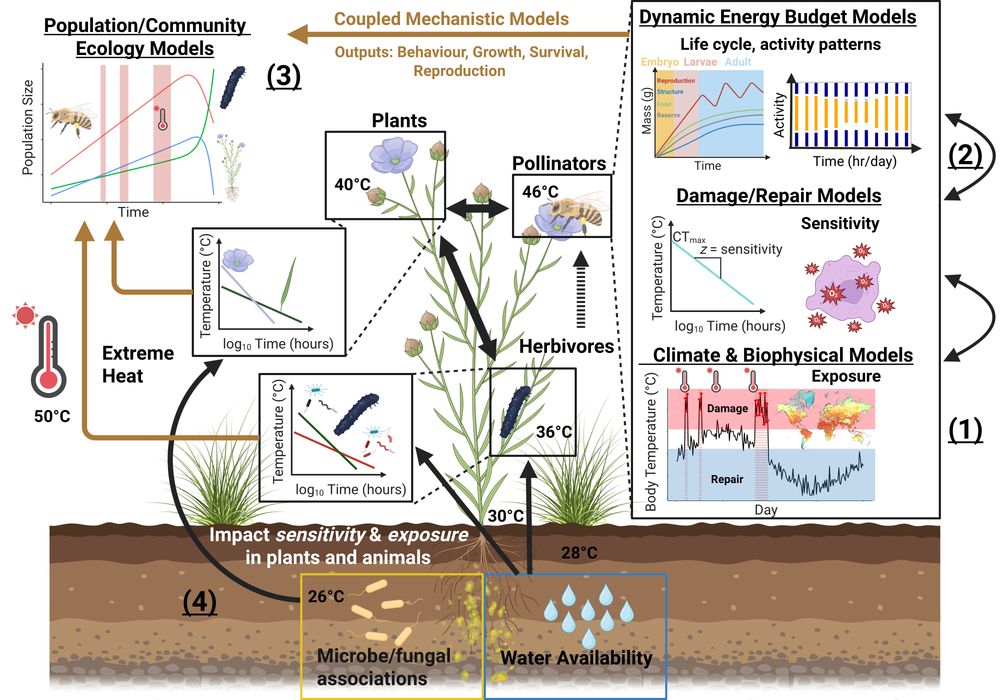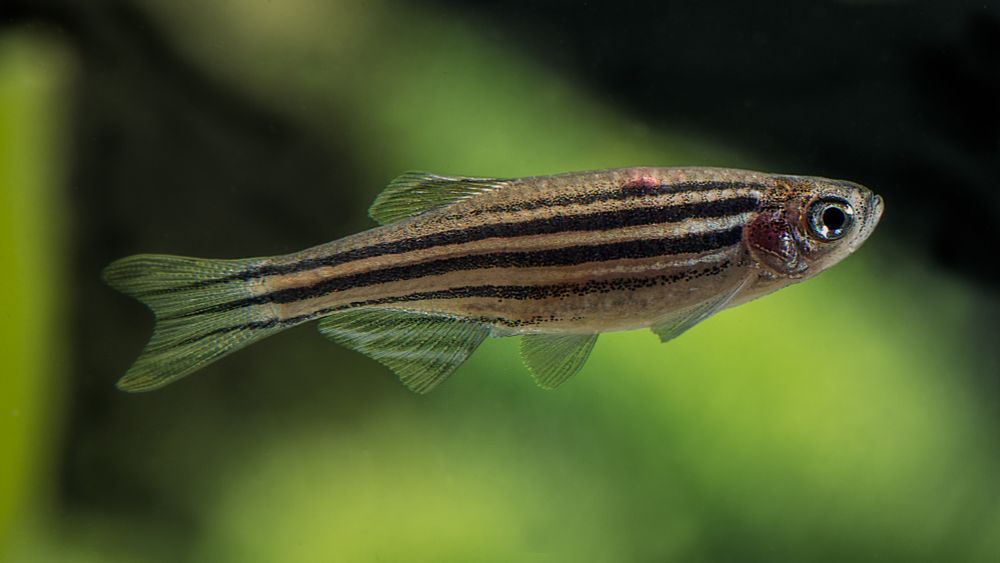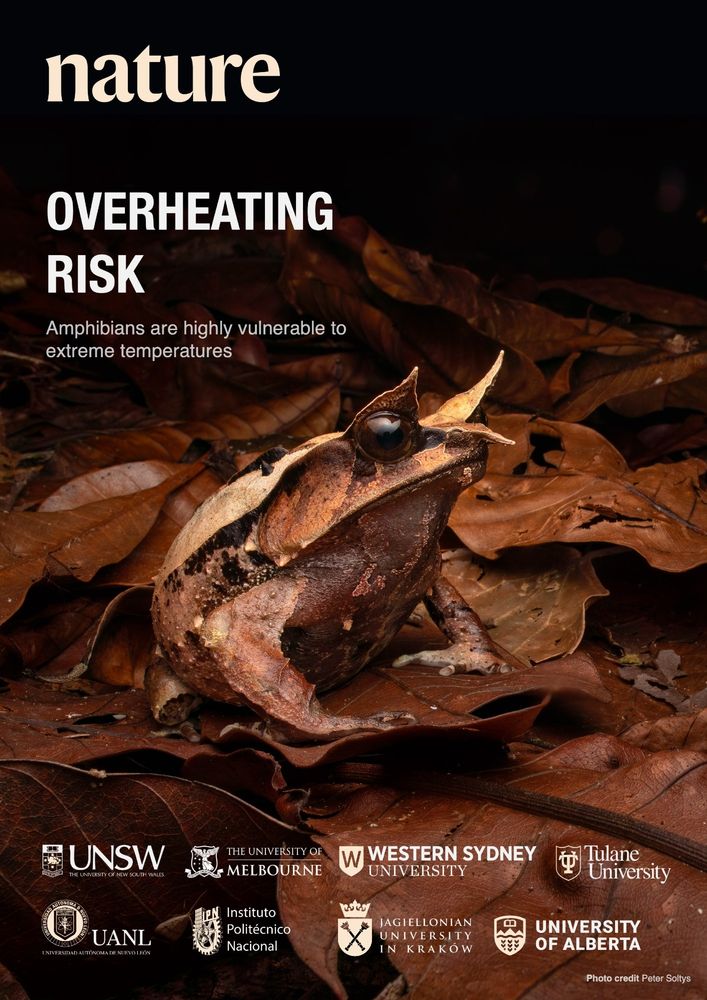
Postdoc at ANU and UNSW; @SORTEE board member
Global change biology 🌍🌡️🏭, ecophysiology, evidence synthesis, open science 🔓
I love all kinds of critters 🐠🦎🐸🪲🐝🦑🦈🪸
Opinions my own; he/him
Reposted by Patrice Pottier, Samuele Ramellini

🔗: www.thermalecologyalliance.org
Reposted by Patrice Pottier

@natclimate.nature.com led by Anna Andreassen
@annahandreassen.bsky.social
www.nature.com/articles/s41...
🧪🐟🦑


Some surprising results that help us better understand trade-offs and physiological mechanisms conferring thermal sensitivity
🐟🌡️


@natclimate.nature.com led by Anna Andreassen
@annahandreassen.bsky.social
www.nature.com/articles/s41...
🧪🐟🦑
Reposted by Patrice Pottier

Reposted by Wolfgang Wüster, Patrice Pottier
Reposted by Patrice Pottier, Marta Maziarz


Here's the figure for the validation approach
🧵(6/27)

article for an easy summary
theconversation.com/hot-frogs-an...
#TheConversation
Paper: www.nature.com/articles/s41...

bsky.app/profile/nich...
He's an incredible graphic designer and scientist, and many of the illustrations in this thread/paper are from him.
for supporting me throughout this research.
I am also incredibly thankful to have been able to do this work on the traditional land of the Bedegal people. I feel gifted to learn from thousands of years of cultural and natural heritage.
🧵(27/27)
Samantha Burke, @szymekdr.bsky.social & @itchyshin.bsky.social
I couldn't have done this without you!
🧵(26/27)
@github if you would like to go through the analyses and see some additional results and visualisations! 🌟
p-pottier.github.io/Vulnerabilit...
🧵(25/27)
doi.org/10.1038/s415...
This was by far the most challenging, but also rewarding project of my PhD (4 years from conceptualisation to publication). So glad to see this out!!
🧵(24/27)
The availability of shade, vegetation, and water bodies is critical in buffering amphibians during heat waves. Immediate action is needed to manage these microhabitat features (esp. water sources!) ⚠️
🧵(23/27)
Both temperate and tropical amphibians are predicted to experience overheating events!
It is not safe to assume that tropical ectotherms are most vulnerable to warming, it is region- and species-specific ⚠️
🧵(22/27)
Using averaged temperatures does not reliably inform vulnerability risk because extreme heat events 🌡️ are the very phenomena triggering overheating events ⚠️
🧵(21/27)
Although plasticity allows amphibians to adjust their thermal limits, it is not sufficient to compensate for projected temperature increases under global warming 😰
🧵(20/27)
Differences projected under 2 or 4°C of warming are enormous. We need to reduce our greenhouse gas emissions before it is too late🥵
🧵(19/27)
1. Amphibians are particularly vulnerable to extreme temperature events.
Our estimates are in fact conservative (assume constant access to shade and wet skin). The impacts of warming will be much stronger than what we predict 😱
🧵(18/27)

In fact, calculating TSM based on averaged temperature profiles hides critical tipping points for thermal stress (c,d)! ⚠️
Therefore, capturing daily temperature variation is key in assessing vulnerability risk!
🧵(17/27)

In the S. Hemisphere, tropical species encounter disproportionally more overheating events, while in the N. Hemisphere, non-tropical species are more susceptible (a,b)
🧵(16/27)

This clearly demonstrates the importance of water bodies for amphibian thermoregulation⚠️
🧵(15/27)

In arboreal conditions (b), numbers are slightly lower, but we find similar patterns
🧵(14/27)

In fact, extreme temperatures occasionally push many amphibians beyond their thermal limits, particularly under extreme warming scenarios😱
🧵(13/27)

TSM is also slightly higher in aquatic (b) environments relative to terrestrial (b) and arboreal (c) habitats
🧵(12/27)

We then calculated 2 metrics: thermal safety margins (TSM, mean difference between CTmax and body temperatures), and the number of overheating events
🧵(11/27)
#NicheMapR is that they estimate body temperatures at high spatial and temporal resolutions 🌟
In our study, we estimated daily operative body temperature profiles, and measured their proximity to thermal limits
🧵(10/27)



